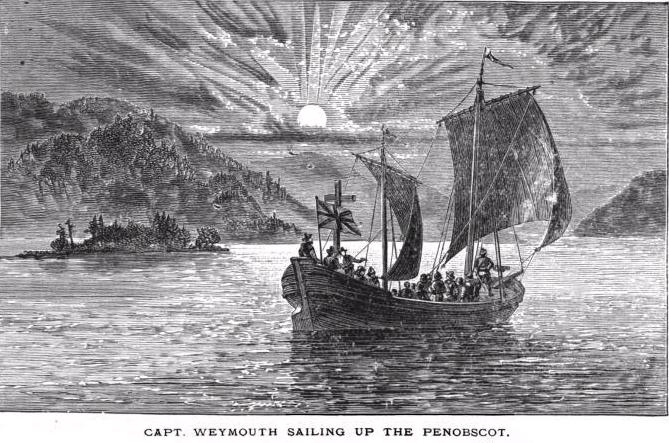A common practice during the European discovery of Atlantic America was the abduction of Indigenous people. Some abductees were taken as trophies and displayed as exotic wonders, others were grabbed to interrogate and then used as pilots and guides, while still others were snatched to sell as slaves. There were thirteen recorded abductions between 1500 and 1615, spanning the entire eastern seaboard (Table 1). Captives were taken from seven different Indigenous groups.
Not all expeditions took captives, but the odious practice was very common. This trail of tears started with the very early Portuguese expeditions to northeastern Canada, then the Spanish exploits in Florida and the southeast, followed by the French in North Carolina and Ontario, and the English in eastern Canada, Virginia, and New England.
Indigenous people abducted in the 15th and 16th centuries in Atlantic America
1500 – 3 Beothuk, Labrador, Francis Fernandez & Joao Gonzales, Trophies (1)
1508 – 5 Beothuk, Newfoundland, Thomas Aubert, Trophies (2)
1517 – 500 Cusabo, South Carolina, Pedro de Salazar, Slavery (3)
1521 – 150 Cusabo, South Carolina, Francisco Gordillo and Pedro de Quejo, Slavery (5)
1523 – 50 Beothuk, Newfoundland, Estêvão Gomes, Slavery (6)
1524 – 1 Coree, North Carolina, Giovanni da Verrazzano, Trophy (6)
1534 – 2 St. Lawrence Iroquoian, Ontario, Jacques Cartier, Interpreters/guides (7)
1536 – 9 St. Lawrence Iroquoian, Ontario, Jacques Cartier, Interpreters/guides (8)
1577 – 3 Inuit, Greenland, Martin Frobisher, Trophies (9)
1584 – 2 Coree, North Carolina, Philip Amadas and Arthur Barlowe, Interpreters/guides (10)
1605 – 5 Wabanaki, Maine, George Waymouth, Interpreter/guides (11)
1611 – 5 Wabanaki and Nauset, Maine and Martha’s Vineyard, Edward Harlow, Interpreter/guides (12)
1614 – 27 Nauset, Plymouth and Cape Cod, Thomas Hunt, Slavery (13)
Sources:
1. Biggar, H.P. (1911) The precursors of Jacques Cartier 1497-1534: A collection of documents relating to the early history of the Dominion of Canada. Ottawa Government Printing Bureau.
2. Lanctot, G.(2003b) La Roche de Mesgouez, Troilus de. Dictionary of Canadian Biography, vol. 1, University of Toronto/Université Laval,
3. Hoffman, P. E. (1980) A New Voyage of North American Discovery: Pedro de Salazar’s Visit to the “Island of Giants” The Florida Historical Quarterly. 58(4) 415-426
4. Johnson, J. G. (1923) A Spanish settlement in Carolina, 1526. The Georgia Historical Quarterly, 7(4): 339-345.
5. Vigneras, L.A. (2003) Corte-real, Gaspar,” Dictionary of Canadian Biography, Vol. 1, University of Toronto/Université Laval
6. Wroth, L.C. 1970. The voyages of Giovanni da Verrazzano, 1524-1528. Published for the Pierpont Morgan Library by Yale University Press, New Haven.
7, 8, 10 & 11. Burrage, H.S. (ed.) (1906) Early English and French voyages chiefly from Hakluyt 1534-1608. Charles Scribner’s Sons: New York.
9. Collinson, R. (1867) The three voyages of Martin Frobisher, searching for a passage to Cathay and India by the North-west, A.D. 1576-8. Reprinted from the first ed. of Hakluyt’s Voyages, with selections from manuscript documents in the British Museum and State Paper Office. Hakluyt Society London.
12. Swett, S. (1899) Stories of Maine. American Book Company, New York.
13. Burrage, H. S. (1923) Gorges and the Province of Maine 1622 grant, A tercentenary memorial. State of Maine.
Illustration: Captain Weymouth’s expedition in Penobscot Bay in Maine, from: “A Book of American Explorers” By Thomas Wentworth Higginson Published by Lee and Shepard, 1877.
